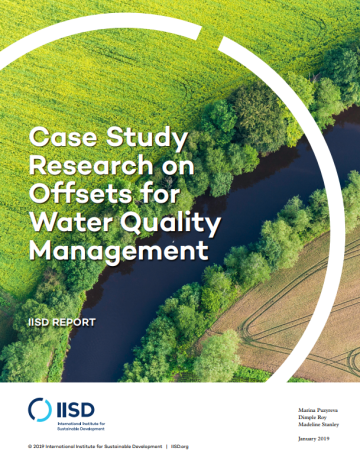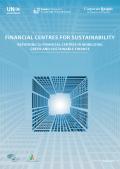
This case study research examines six water quality trading (WQT)/offset programs from Canada, the United States and New Zealand and highlights specific policy and program mechanisms that enabled the programs to achieve their goals of reduced nutrient and contaminant loading.
Most offset/WQT programs reviewed are point source (PS) to NPS models, where PSs are subject to explicit regulatory limits, while agricultural producers (NPS) are not—they can voluntarily implement BMPs to sell credits. Some programs, however, make provisions for other trading schemes such as PS–PS (Tualatin River Program), NPS– NPS (Lake Taupō Nitrogen trading program) and stewardship trading (EPRI Ohio River Basin Trading Project).
The report highlights key elements of successful offsetting and trading operations:
- Regulatory frameworks that are concentration-based as opposed to load-based caps for dischargers.
- Economic incentives that offer significant variations in pollution abatement costs.
- Credits/units of pollution reduction that are measurable and cannot create hotspots or accumulation of impacts in the watershed.
- A well-defined geographic area.
- A baseline for credit generation that takes account of all pre-existing regulatory requirements in the relevant trading area.
- Offset ratios, which often incorporate some combination of the following variables: Form of the pollutant; Geography of polluters (i.e., the location of buyer in relation to seller; Uncertainty associated with the quantification of NPS load and BMP performance (different BMPs perform differently in geographically different contexts and at different times); Credit retirement to ensure a net reduction in water pollution; Attenuation of a water quality benefit between the location where credit generation occurs (BMPs are installed) and the point of use; Lag in time between BMP installation and BMP producing a full water quality benefit.
- A cost-based pricing model.
- Credit stacking for multiple ecological benefits. For programs that rely on voluntary supply of credits from farmers (most programs reviewed), the success of the offset program will in many ways depend on communication strategies and institutional frameworks to involve agricultural producers. Lessons related to this:
- The most successful agricultural trading models make effective use of traditional agricultural soil and water conservation institutions to engage farmers and fund pollution-reduction projects.
- They are also able to ensure local control and flexibility of the program design and execution through direct consultation and partnership with local communities and municipalities.
- Simplifying eligibility requirements, delivery, verification and other offset procedures for landowners is important to secure their participation.
- Additionally, ensuring minimal potential liability for landowners for meeting water quality standards through offsets was determined as a key element.
- A trusted intermediary/program administrator to manage the program.
- Verification and monitoring approaches that are based on working knowledge of farm operations and systems.


